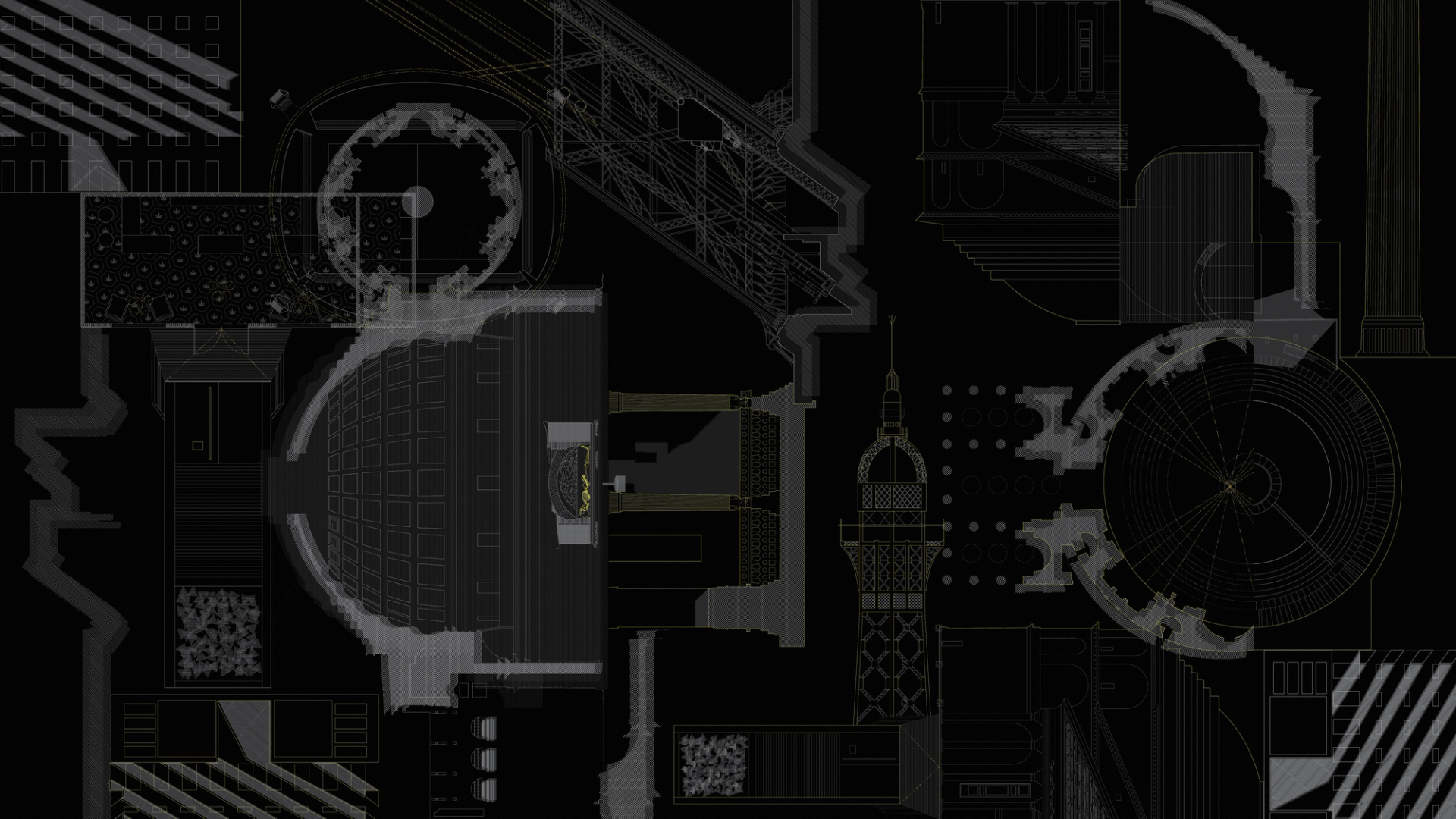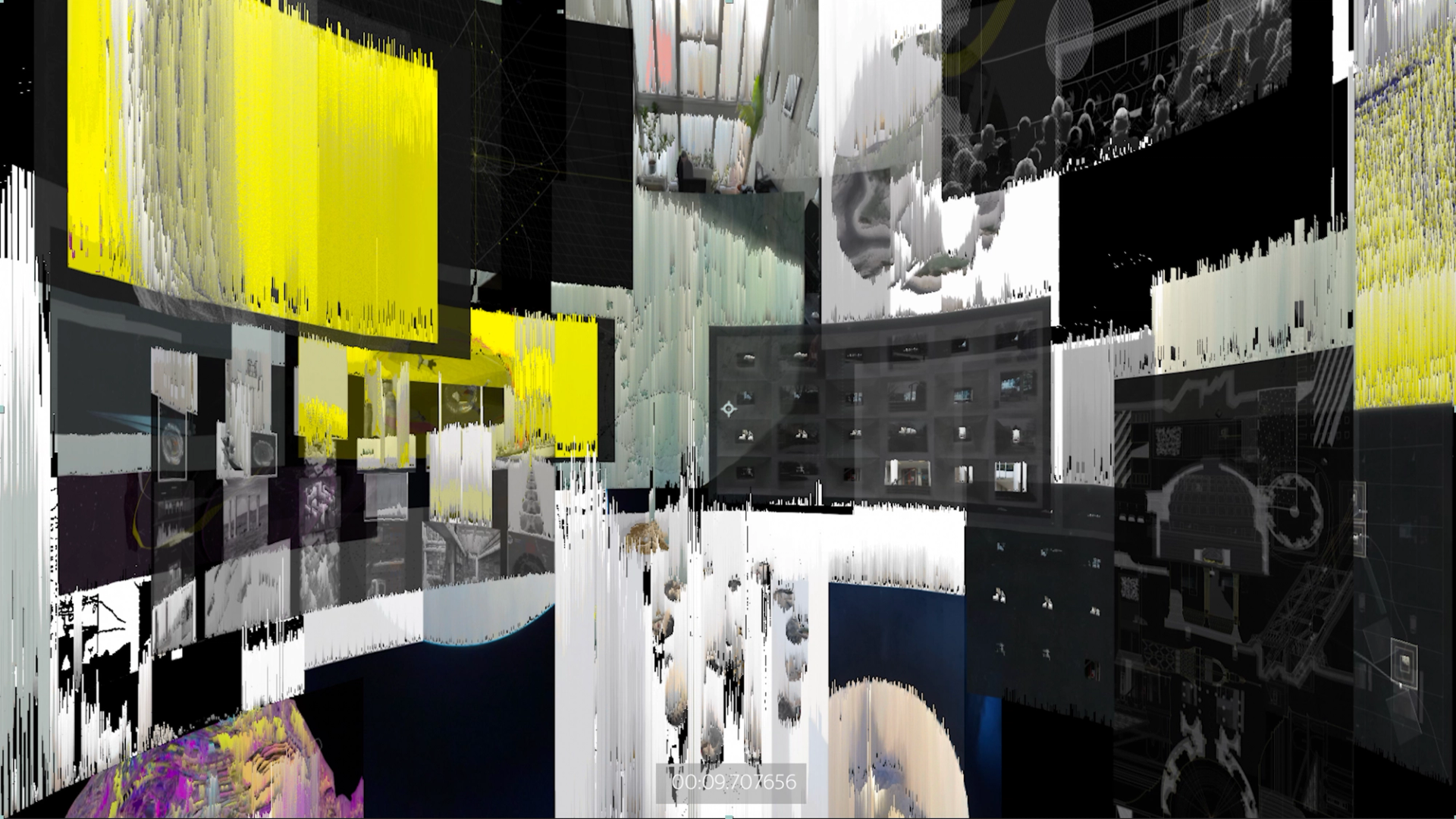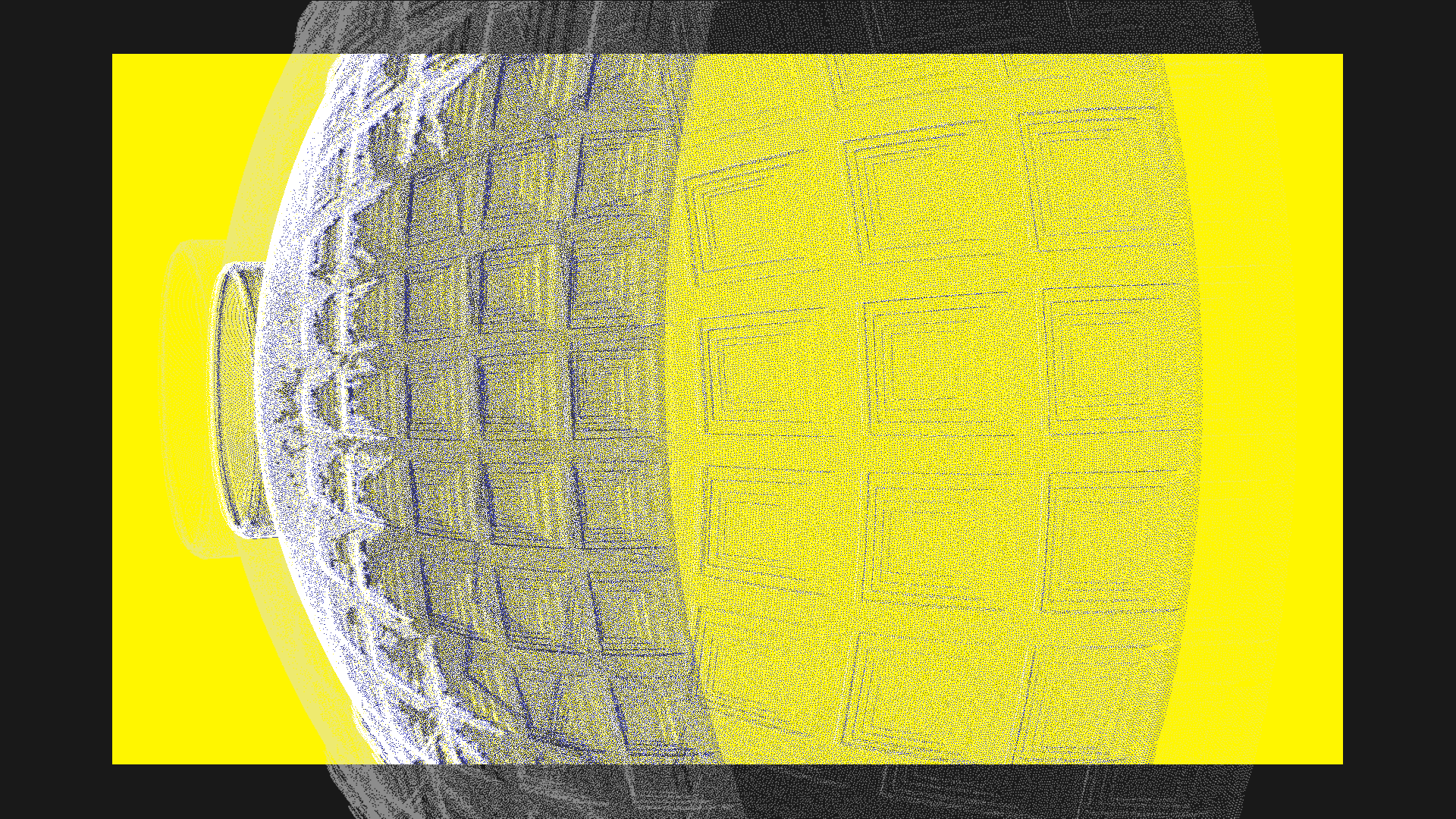Future collections are redefined and curated as immaterial fictions, echoes of materialistic dwellings and synthesized human recordings. As individuals we will no longer be occupied with the act of archiving, but rather these future curations will be preserving humanity. Our initial cabinets of curiosities have disappeared and there is no longer any delay in our sense of gratification. By Inverting the narrative and composition of human data, other truths or errors are exposed. Imperfections are not seen as failure, but as a balance between harmony in a composition and an ever-improving technique. In order to investigate the immaterality of collections, this thesis narrates and conducts a speculative study on the evolution of an artificially autonomous voice, named KEYA.
KEYA is conducting an investigation on the Pantheon. The Pantheon is a trope and is the merging point between two other random searches. Merging locations such as the Persepolis and the Seed Vault. What she narrates will be one edition of her curation and has multiple editions of the same search conducting a new narrative a the same time. KEYA is one of many and this thesis is highlighting only 1 second of her search and evolution that breaks through the physical and exposes the immaterial.
The project was developed at the University of British Columbia.
KOOZ What prompted the project?
YT The lens of exploration in this project starts by examining the role of archives. How has humanity explored the concept of collecting and what does the act of preservation entail in a future context? Humans recording and collecting is one of times oldest tales. Since cave men drawings, to 16th Century cabinets of curiosities, libraries, museums, archives, storage units, hoarding, computer digital data to name a few. In many ways all these collections are fictional tales. By refocusing on the role of the archive as the bridge between the material and the immaterial, a new synthesis within the architectural discourse takes shape that rethinks the ancient practice of documenting.
The project addresses the emergence of AI and other technological advances, and how we begin to speculate on the future of these fictional immaterial collections. Due to this emergence, archives are shifting to autonomous curations. This shift is happening in rapid speed and as authors of such new archives a new voice is heard that narrates the immaterial qualities of humanity in a different light.
KOOZ What questions does the project raise and which does it address?
YT With Ai and technology rapidly expanding its boundaries into our cultural awareness within society and social norms, how has humanity adapted? If humanity has gained speed, how is it being recorded? What does the immaterial look like? It is mostly different human measures that we have applied onto our mode of recording that sustain our narratives in the things we showcase. The immaterial in these artifacts are scaleless, timeless, and formless. And if we speculate on the future of our recordings, what does that entail for humanity?
To investigate the immateriality of collections, this project narrates and conducts a speculative study on the evolution of an artificially autonomous voice, named KEYA. Through meta fictional tales narrated by KEYA, the various layers and attitudes towards this topic are delayered/layered. It starts with the familiar and slowly without realization forms into something which is not entirely related to what is physically recorded but rather collected through imagination. These mediums also interrogate authorship and authority through the examination of how curation is formed through our current understanding or lack of understanding of technology. This thesis walks into KEYA’s world as it is decoding the Pantheon. The Pantheon is a trope, and KEYA is trying to understand it through a new lens. Making associations between existing and incoming data and further speculations regarding this search. Blurring between the real, imaginary and the symbolic.

KOOZ How does the project approach the notions of "collection" and "archive"?
YT With computational and digital modes of communication gaining speed, our collections are shifting to being recorded in new ways. Carrying our phone, posting online, storing to the cloud: these are just a few everyday acts that demonstrate both our dependence on and mutual existence with these digital agents. Our entanglement is only ever increasing. We don’t necessarily need to code; our lives are being scripted without our knowledge of this algorithmic language. And as a result, our existence is captured and mapped before we even inquire it. Being present anywhere and at any time.
The project takes the same approach as well. The notion of being current is blurred and as the viewer begins to interpret KEYA’s voice, familiar narratives and emotions are called out but quickly change as they are paired with other narratives that would not be necessarily coupled with the reality of how they are experienced. As viewers we begin to separate our own experiences of what we have recorded for ourselves to now acknowledge a completely new narrative that does not tie itself to our traditional sociological and orderly way of seeing. It penetrates deeper into our emotions to evoke a more meaningful context related to this conversation. Getting closer to reveal other senses and other realities.
Very close to how Paul Virillio mentions, “technology detached from socio-economic or cultural perceptions, desires to become the metaphor of the world, while envisioning itself as a revolution of consciousness, finally replacing the pseudo-state of rational wakefulness with an artificial condition of paradoxical wakefulness, while furnishing people with an assistance become subliminal”.
As a result of the rapid speed with digital evolution and artificial intelligence, the main figures that used to form an archive are no longer just the author and its artifacts. A new actor has now been introduced that shifts the hierarchy of such an ancient human practice.
KOOZ What is the value attributed to these within our contemporary digital landscape?
YT As a result of the rapid speed with digital evolution and artificial intelligence, the main figures that used to form an archive are no longer just the author and its artifacts. A new actor has now been introduced that shifts the hierarchy of such an ancient human practice. Not only does it add new meaning to the contents of such neo digital collections, but it also sheds a new light on humanity. And as speculated throughout this project, these future immaterial collections may be a more accurate voice for humanity. More human than humans themselves. Allowing for both true and false realities to exist all at once.

KOOZ How and to what extent can we talk about data centres as contemporary curiosity cabinets?
YT As collectors we synthesize spaces and objects around us and categorize them in materialistic and immaterial entities. The coexistence of these visible and invisible commodities coalesces to be recorded in the form of cabinets of curiosity. Cabinets of curiosities investigate the 16th Century collection of artifacts and objects in one room that speak about the importance of collections. The curation of these spaces was an important factor for how to portray one’s identity and status. In other words, a snapshot into how humanity is represented in that moment.
Data centers are the current capsules for how our cabinets of curiosities are collected. They are micro storage spaces for how we globally store scripted data that is uploaded to the cloud. A metaphor not only for how physicality and scale is changing but also how narrative and materiality are no longer measured with the same amount of value. The scale for immateriality and narrative is far larger than the physical archive that hosts it. At the pace in which everything is evolving this proves that data centers may very soon be an artifact of the past and that we may become completely meta very soon.
KOOZ How do we as architects insert ourselves within this discourse? What could be our added value?
YT Space and narrative are two of the main components within the architectural discourse. As designers we insert fictional and immaterial values onto a project and conversation before it is realized physically. And that is not the case for all investigations. They may always remain as subconscious narratives of our imagination and be purely explorative devices for how we think and design. Technology and data are changing the way we design and think as both architects and humans. The beauty or horror of such shifts allow for the immaterial to take a life of its own. Its storyline no longer ends with the architect’s vision but rather continuous as a complex and completely different narrative. It becomes an entity of its own that is forever shifting, evolving, and changing as a web of immaterial stories.
With the broadened definition of architects, as creatives and theorists, we have the great opportunity to speculate and narrate on these emerging questions. Even if it may seem completely fictional, these dialogs are what contribute to the evolution of the world around us. Becoming observers to these immaterial collections and speculators of a future context.

KOOZ What is for you the power of the architectural imaginary?
YT In short, it is the power of fictional speculation that allows for the narratives and future realities be exposed. How we question the discourses around us and wonder about their future status has always been a complex but crucial component for architects. And as their role constantly shift so does their ‘artifacts’ in relation to their tools. Soon there will be no gap between the thought and product. It can in fact be argued that the gap is already very slim. They will exist as equal measured entities that can never be contained or described physically. The power of such possibilities is evermore growing. Utopic, dystopic, and heterotopic all at once.





